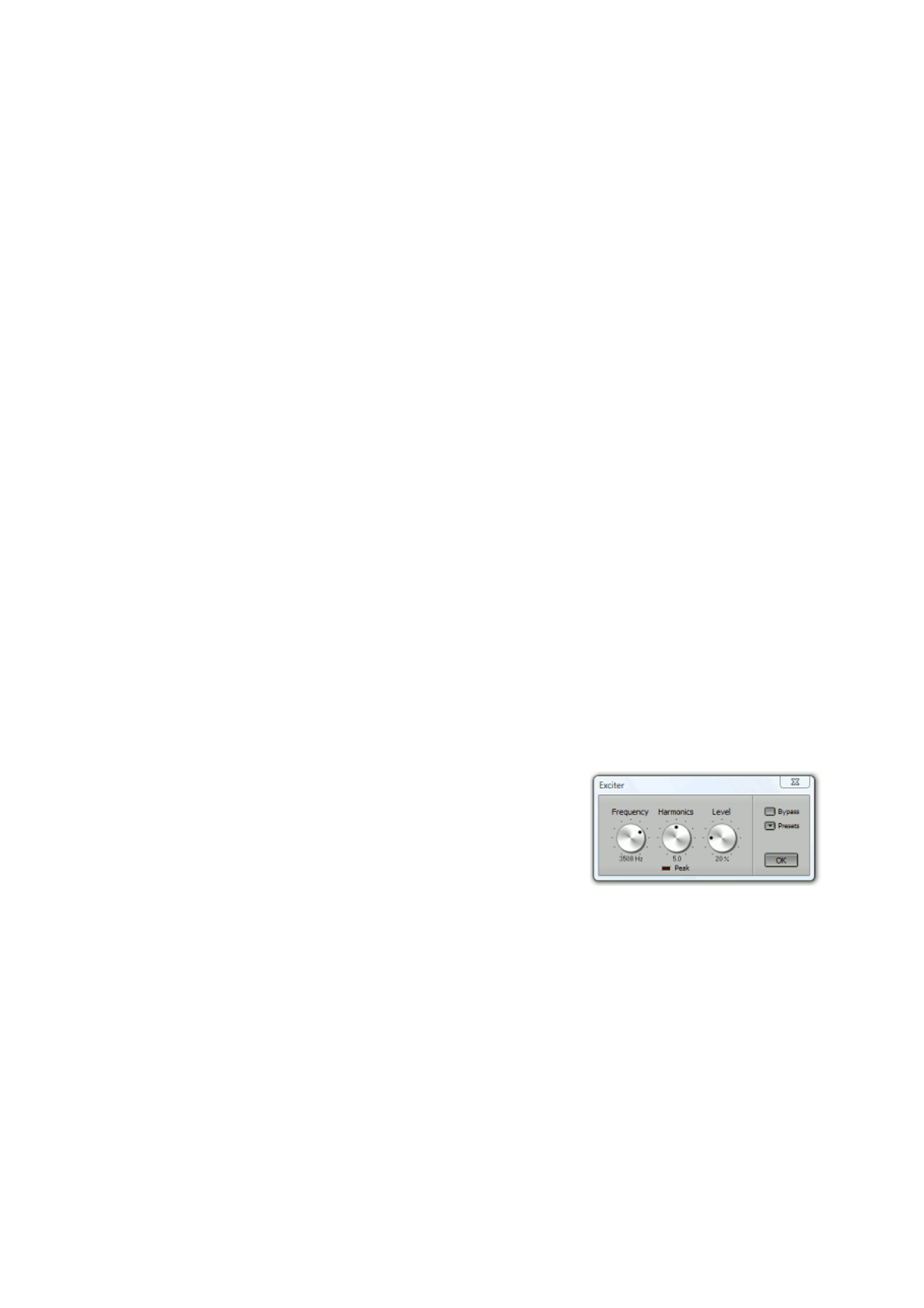User Guide
Table Of Contents
- Contents
- 1 Introduction
- 2 Songs
- 3 Transport
- 4 Recording
- 5 Playback and Mixing
- 6 Mastering and Mixdown
- 7 Effects
- 7.1 Automated Fader
- 7.2 Band Effect
- 7.3 Chorus
- 7.4 Compressor
- 7.5 Convolutor
- 7.6 Deesser
- 7.7 Doubler
- 7.8 Dynamics
- 7.9 Echo
- 7.10 EQ
- 7.11 Exciter
- 7.12 Flanger
- 7.13 Guitar Amp
- 7.14 Master Limiter
- 7.15 Multi Effect
- 7.16 Noisegate
- 7.17 Parallel Effect
- 7.18 Phase Inverter
- 7.19 Phaser
- 7.20 Pseudo Stereo
- 7.21 Reverb
- 7.22 Rotor
- 7.23 Saturation
- 7.24 Stereo Effect
- 7.25 Tremolo
- 7.26 Tuner
- 7.27 Vibrato
- 7.28 VST Plugins
- 7.29 DX Plugins
- 7.30 External Sidechain Routing
- 8 MIDI Instruments
- 9 Automation
- 10 Editing
- 10.1 Editing Tracks
- 10.2 Editing Audio Tracks
- 10.3 Vocal Pitch Correction
- 10.4 Editing MIDI Tracks
- 10.5 Editing Notes
- 10.6 Pianoroll Editor
- 10.7 Notation Editor
- 10.8 Drum Editor
- 10.9 Controller Editor
- 10.10 MIDI Pattern Editing
- 10.11 Tempo/Time Signature Editing
- 10.12 Song Editor
- 10.13 Multi MIDI Editor
- 10.14 Multitrack Editing
- 10.15 Chords and Lyrics
- 11 Devices
- 12 Control Surfaces
- 13 Audio and MIDI Files
- 14 Keyboard Shortcuts
- 15 Touchscreens
- 16 Preferences
- 17 Tools
- 18 Miscellaneous
- 19 Requirements
- 20 Troubleshooting

The actual frequency spectrum of the audio signal can be shown in the graph. This can be a great help in
setting up the EQ.
Clicking the button at the bottom-right corner of the graph will show a menu that controls the frequency
spectrum that's shown in the graph:
One of the following signals can be shown:
l EQ input
l EQ output
l Master section's output (if the EQ is used in the mixer's Master section), (Pro Plus edition only)
l Band effect in or output (if the EQ is used in a Band effect), (Pro Plus edition only)
The realtime behavior can be one of the following:
l Real time: This option looks nice, but isn't of great value when it comes to setting up the EQ.
l Average: a moving average is displayed.
l Total Average: The average is displayed.
The full scale value can be 0, -10, -20 or -30 dB. The scale can be either 10 or 20 dB/division.
The spectrum can be shown using:
l No Bands: high resolution, but of little psycho-acoustic value.
l 1/3 Octave Bands: Similar to Critical Bands at higher frequencies, but higher resolution in the lower
range.
l Critical Bands: this is the way the human ear works.
The spectrum display will be reset automatically when either the Transport is started or the EQ window
pops up. You can reset the averaging mechanism manually using the F5 key.
Well mastered recordings typically have a spectrum that's flat at frequencies below 500 Hz, and decreases
at 20 dB/decade (6 dB/octave) above this frequency. The Flat Mastering option boosts frequencies higher
than 500 Hz with 20 dB/decade, so a well mastered recording will show a flat spectrum. Potential problems
can be easily found this way.
7.11 Exciter
The Exciter effect adds harmonics to the treble part of the audio
signal. The harmonics generator is modeled after a vacuum tube.
The Frequency knob controls the frequency above which harmonics
are added. For best performance only the top octave of the input
signal should be used. If Frequency is set too low the output will
sound distorted instead of excited.
The Harmonic knob controls how hard the internal harmonics generator is driven. The higher its value, the
more harmonics will be generated. If the harmonics generator is driven too hard the signal will be limited to
avoid excessive distortion, and the Peak indicator will light. This is to be avoided, as the effect is intended
to add more harmonics when the signal is loud.
The Level knob controls the level of the added harmonics.
The Exciter can be set up this way:
1. Make sure the Transport is started.
2. Set the Frequency and Level knobs to their maximum value, set the Drive knob to its middle position.
3. Turn down the Frequency knob until you hear the highest frequencies of the signal.
4. Adjust the Harmonics knob. If set too low, the level of the generated harmonics will be too low (you'll
just hear a high-pass filtered version of the original signal). If set too high, the Peak indicator will light
during signal peaks.
5. Set the Level knob to its minimum value.
6. Turn up the Level knob until you're satisfied with the sound.
Exciter window










